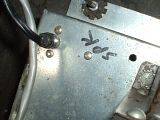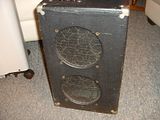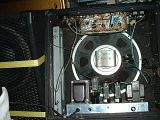I just bought a multimeter to check the impedance of a guitar cab. 2x12's.
Checking it via a cable plugged into the cab, it shows 12.9, so I assume it's a 16 ohm cab. I then pulled one of the speakers and tested the terminals and it read 6.9. So, 8 ohms.
But the speaker is wired to the other one. So does it matter that it is wired to the other speaker ? Or should I disconnect the other speaker and check it again ?
Checking it via a cable plugged into the cab, it shows 12.9, so I assume it's a 16 ohm cab. I then pulled one of the speakers and tested the terminals and it read 6.9. So, 8 ohms.
But the speaker is wired to the other one. So does it matter that it is wired to the other speaker ? Or should I disconnect the other speaker and check it again ?





Comment